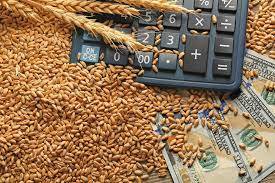Ukrainian agricultural products are increasingly needed by the world

Agricultural market experts believe that the world demand for agricultural products from Ukraine is growing, despite the difficulties associated with logistics. According to analysts, in particular, sunflower is not grown in Europe, not taking into account certain exceptions, so Ukraine will remain the leader in the EU market in terms of sunflower oil supply. Statistics show that for the 2023-2024 marketing year, which starts in July 2023, the European Union purchased 1 million tons of sunflower oil from Ukraine. This indicator is 13% higher than the results of the same period in 2022. In addition to the European Union, African countries should be named among the main importers of agricultural products from Ukraine. Ukraine supplies the EU with sunflower seeds, sunflower oil and soybean meal, and sends wheat to the Middle East and Africa.
According to experts, the share of the European Union in the structure of Ukrainian agricultural exports has also increased. In 2021, it was 32%, and in ten months of 2023, it showed a result of 59%. Analysts explain the change in supply routes by blocking the ports by the Russian occupiers. According to experts, in 2024 the situation in the agrarian and other sectors of Ukraine's economy will depend on what will happen on the battlefield.
It should be noted that difficulties with the export of agricultural products have become the main challenge for farmers. In particular, due to the blockade announced by Polish, Hungarian and Slovak truck carriers, the Ukrainian economy lost about one billion US dollars. Even more damage was done to it by Russian attacks. The Russians conducted one of the largest in July: on the 18th and 19th, the ports of Odesa and Chornomorsk were attacked. The occupiers used both Shaheds and various missiles — Kalibr, Onyx, Kh-59, and even the old Soviet anti-ship Kh-22. The strikes damaged the grain infrastructure of international and Ukrainian traders. Tanks and berths of Odesa port were also damaged. In this one attack alone, 60,000 tons of grain were destroyed in the port of Chornomorsk, and from July to September of last year, the strikes of Russian missiles and UAVs destroyed 280,000 tons of grain. All this had an extremely negative effect on the export of agricultural products. According to experts, currently Ukraine supplies only 50% of the required volume of agricultural export through sea ports. If before the war the ports could export about 7 million tons of grain crops every month, now this figure does not exceed 3-4 million tons.
Another problem of the Ukrainian agro-industrial complex is the lack of vegetable storage facilities. In addition, agrarians built about 15 of them. Within Ukraine, there are still at least 150-170 of them not enough to store the products they grow.
Returning to the issue of logistics, it should be noted that the clearing of trade routes in the Ukrainian part of the seas may take about three to five months. Representatives of the naval forces of Ukraine plan to carry out a large-scale operation, the purpose of which is to demine the waterways of trade in the Black and Azov seas. To clear the seas of mines, Ukrainian defenders have already formed an operational headquarters. Now the new headquarters continue to plan the future operation. Under certain conditions, the global mine clearance operation of the Ukrainian seas may drag on for several years, because even now there are mines in the sea that have remained there since the two world wars.
 Found a mistake on the site? Tell us:
Found a mistake on the site? Tell us:

 Telegram
Telegram